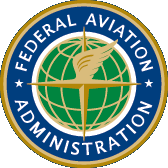MONTHLY ARCHIVES: May 2014
CONGRESS APPROVES 3 MILLION IN ADDITIONAL UAS RESEARCH, CONCEDES LEGISLATION MAY TAKE LONGER THAN 2015
For the optimist, the news of additional funding for UAS integrationensures confidence that the United States is determined to open the skies, sooner rather than later, to commercial drone operations. News, however, that congress is “uncertain when the FAA can integrate UAS into the Nation’s airspace” enables skeptics to roll their eyes at yet another hollow justification of the delays by the government.
Truth be told, “the government is trying to have it’s cake and eat it too.” It’s fantastic that congress recognizes the importance of UAS integration into the Nation’s airspace. But admitting that the FAAmay be incapable of fulfilling its duties is does not exactly conjure up positive feelings for those waiting on the sidelines.
Below is an excerpt from 2nd session of the 113th Congress:
The FAA Modernization and Reform Act of 2012 directed the FAA to integrate UAS into the National Airspace System by 2015. However, it is uncertain when the FAA can integrate UAS into the Nation’s airspace and what will be required to achieve the goal. The lack of an overall framework for the new systems may be inhibiting progress on UAS integration. The Committee is concerned that the FAA may not be well positioned to manage effectively the introduction of UAS in the United States, particularly in light of a recent ruling by a National Transportation Safety Board (NTSB) administrative judge regarding the use of a small UAS for commercial purposes. Given these challenges, the Committee has provided an additional $3,000,000 in the Aviation Safety Activity to expedite the integration of UAS into commercial airspace.
I know cliches aren’t exactly the most professional ways of making a point, but the best thing I could say to end this post is:
Dear FAA and Congress….. Actions speak louder than words.
THE NEXT GENERATION OF FIXED-WING DRONES
A month ago, I posted about an innovative new approach to the design of fixed-wing drones. When I first saw the JUMP, by Arcturus, I was blown away at how such a simple idea could revolutionize the sUAS industry. By combining the vertical-take-off-and-landing (VTOL) capabilities of a multi-rotor with a fixed-wing platform, the failures associated with a conventional “crash-landing” are essentially eliminated.
Lo and behold, it only took a few weeks for me to start and seeing other hybrid systems already on the market. Birds Eye View Aerobotics’ FireFly6 stood out to me because of it’s simplistic design and economical price (about 800 bucks for everything). Check out the video to see how cool this drone is!
So is this new approach going to be adopted throughout the UAS industry? It will be interesting to check back in a year to gauge how many hybrid systems are out there. Considering the pace of progress, and the willingness of UAV manufactures to embrace new ideas, I would say absolutely.
Link Courtesy of Birds Eye View Aerobotics
TEAM BLACKSHEEP TAKE AMAZING VIDEO OVER THE WORLD’S TALLEST BUILDING
Team BlackSheep recently released a first person view (FPV) video from a UAS flying over the Burj Khalifa, the world’s tallest building in Dubia. That’s almost 2,800 ft folks.
The video speaks for itself. Enjoy.
FAA EYES INITIAL LIMITED COMMERCIAL UAS OPERATIONS
 The increasing potential of small UAS commercial applications continues to push the demand for rules and regulations to new heights. According to Aviation Week, the FAA is working to expedite COA exemptions for the agriculture, film making, pipeline/power-line inspection, and oil-and-gas inspection industries. For good reason, safety is touted as the number one reason that these industries are first in line for such exemptions. Jim Williams, the UAS integration office manager for the FAA, emphasized “exemptions will be for specific limited and low-risk operations.”
The increasing potential of small UAS commercial applications continues to push the demand for rules and regulations to new heights. According to Aviation Week, the FAA is working to expedite COA exemptions for the agriculture, film making, pipeline/power-line inspection, and oil-and-gas inspection industries. For good reason, safety is touted as the number one reason that these industries are first in line for such exemptions. Jim Williams, the UAS integration office manager for the FAA, emphasized “exemptions will be for specific limited and low-risk operations.”
In true FAA fashion, however, Williams complicates matters by stating “there will still have to be a certified pilot with specific training for that type of aircraft. We can’t waive that.” So does this mean an individual with a certified pilot’s licence? If this is true, he is basically defining the requirements of the Special Airworthiness Certificate (SAC) which is already in place. In February, I challenged the FAA on the legitimacy of needing a certified pilot for sUAS operations. A justification was not given.
Maybe Williams is referring to a UAS specific pilot certification. Could it be that the FAA is taking the progressive approach of developing this certification in the very near future? This would be a breath of fresh air because it would help establish the beginning foundations of the regulation process.
I hate to sound like a pessimist, but my gut says that is wishful thinking.
Link Courtesy of Aviation Week

